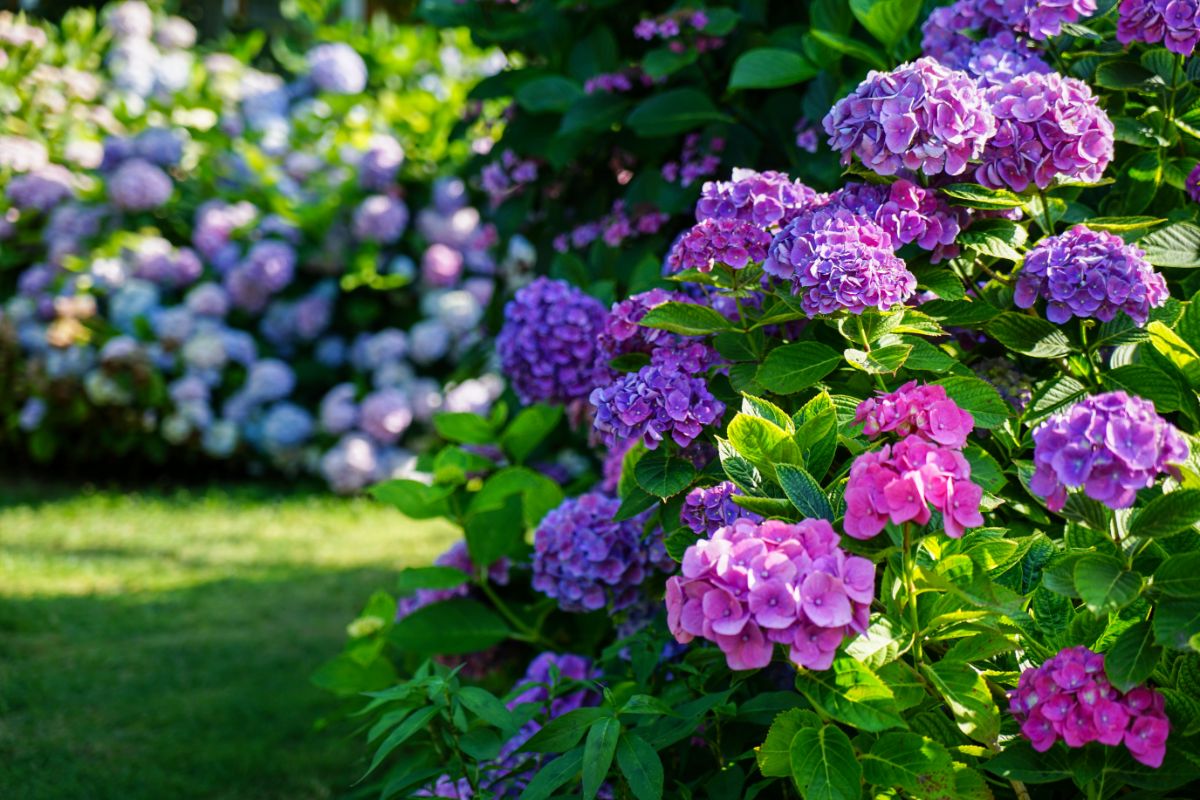Hydrangeas are among the most stunning flowers in the garden, a gorgeous welcome to summer, and, with the right varieties and care, a party that lasts all season long. Planting may seem like the easy part of caring for your hydrangeas, but giving your plants the best start is of utmost importance. Let’s talk about planting hydrangeas.

Types of Hydrangeas
Every gardener seems to have their own vision for what constitutes a perfect hydrangea garden. Luckily, this varied group of plants offers something for everyone. Let’s look at a few of the common types of hydrangeas you’ll see in North American gardens.
Annabelle or Arborescens Hydrangeas
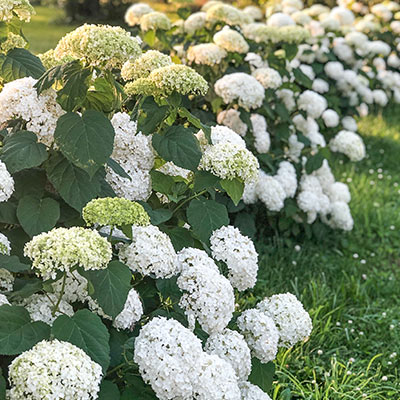
Arborescens, also known as Annabelle hydrangeas, are among America’s most beloved landscape plants. These hydrangeas tend to bloom in white to green tones, but some arborescens bloom in both light and dark pink, or even mauve. Annabelle hydrangeas have attractive foliage and showy displays of pristine mophead flowers. As North American natives, Arborescens hydrangeas are among the easiest to care for, with simple pruning needs and excellent hardiness. They bloom on old and new wood, and are reliably bud hardy, even in cold zones. Annabelles are excellent for adding structure to the landscape.
Paniculata Hydrangeas
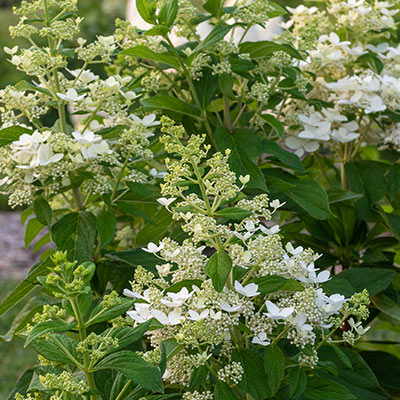
Paniculata hydrangeas feature elongated panicle flowers, and are incredibly easy to care for. Paniculatas like Skyfall, Little Spooky, and Confetti offer smaller silhouettes than the well-known classic Limelight Hydrangea. All paniculata hydrangeas start out in tones of green or white. Most transition to a secondary color phase of reds and or pinks after the bloom matures. Berry White and Strawberry Sundae are among our favorite boldly-colored paniculatas.. With great adaptability and a huge selection, this is the perfect group of hydrangeas for beginners and collectors alike. Paniculatas bloom on old and new wood while reliably flowering in colder climates.
Macrophylla Hydrangeas
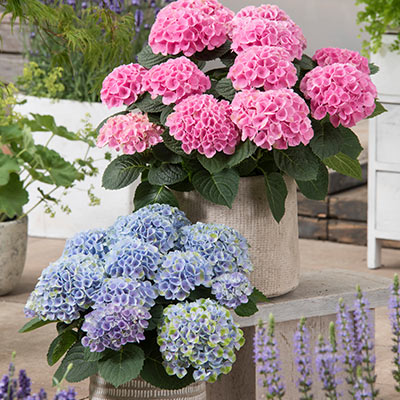
Macrophylla can also be known as big leaf hydrangea, like the L.A. Dreamin’® Hydrangea. The terms mophead and lacecap refer to the form of the bloom. In some varieties of these pink-to-blue hydrangeas, like Tellers Blue or Elizabeth Ashley hydrangeas, the color of the flowers is influenced by soil pH and the availability of aluminum in the soil. Just as the name suggests, bigleaf hydrangeas are known for their large, lush foliage. Many of these varieties hold leaf color into the late summer, and a few even offer beautiful fall color in the leaves.
Serrata Hydrangeas
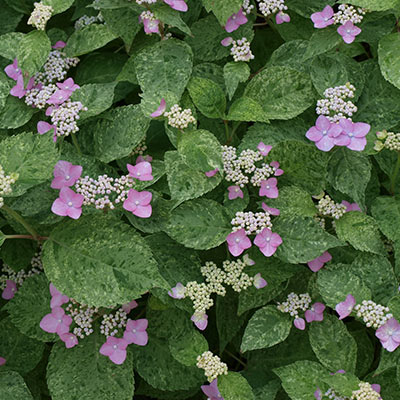
Serrata hydrangeas are also called Mountain Hydrangeas. Most serratas have pleasing lacecap forms. Most bloom on old wood, but some newer varieties bloom on both old and new wood. Serrattas can look like a compact version of lacecap macrophyllas, and tend to have delicate flowers.
Oakleaf Hydrangeas
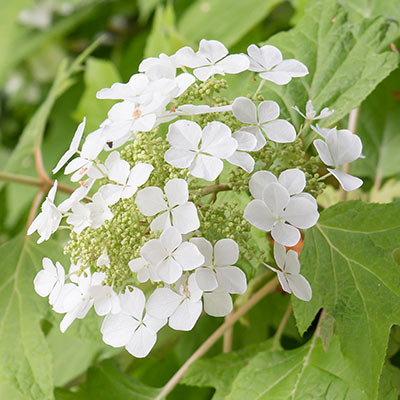
Just as the name suggests, these hydrangeas are named for the shape of their foliage.Oakleaf hydrangea flowers appear in elongated, cone-shaped clusters, distinguishable from the ovate or heart-shaped leaves of Macrophylla species. Many of these varieties offer beautiful fall color in the leaves-check out Little Honey if you want to see an amazing hydrangea with golden chartreuse foliage color. Oakleaf hydrangea are also a North American species, so they really thrive in American gardens.How .
Hydrangeas are a varied genus, so check the recommendations on your specific plants. With the right planning and a good location, these will come back year after year.
When Do You Plant Hydrangeas?
Hydrangeas are best planted in late spring or early fall, while temperatures are generally moderate to cool. Make sure to plant after the final frost of the year, but before summer reaches its hottest temperatures.
Where Do You Plant Hydrangeas?
As with any other plant, picking a location to plant your hydrangea is the first step. Consider sun needs, soil requirements, and the mature size of your hydrangea.Hydrangeas are relatively easy to site, as long as you have a space that meets their sun requirements. An area that has a combination of morning sunlight and afternoon shade works well for most hydrangea species. Some hydrangea varieties enjoy full sun while others require a more shady location. Not all hydrangeas flourish in heavy afternoon sun, but panicle and climbing hydrangeas can handle it. Panicle hydrangeas need at least six hours of sun to bloom to their full potential. Macrophylla and serrata hydrangeas will burn up in full sun in hotter climates — so, provide those hydrangeas with afternoon or dappled shade. Oakleaf can usually handle full sun in temperate climates, but, in warmer climates, they also require some afternoon shade.You’ll also want to choose a location large enough for the plant to grow to its full mature size. You don’t want to miss out on any of those beautiful flowers-or find them bent because your shrubs are running up against a building or another plant. Consider both the mature height and spread of the plant, and whether you’ll need room to set stakes for large flowers.
